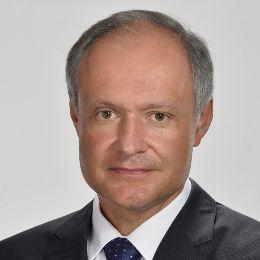Sensors, Actuators and Methods in Active Noise and Vibration Control
A special issue of Applied Sciences (ISSN 2076-3417). This special issue belongs to the section "Mechanical Engineering".
Deadline for manuscript submissions: closed (20 May 2022) | Viewed by 11613
Special Issue Editors
Interests: active noise and vibration control; mathematical modeling; vibration of plates and shells; fluid–structure interaction; signal processing applications; sensors and actuators in vibration control; control algorithm applications
Interests: signal processing; active control of sound; system identification; adaptive control; sensors; modeling; data analysis
Interests: noise and vibration control; structural control; signal processing; optimization; modeling
Special Issues, Collections and Topics in MDPI journals
Special Issue Information
Dear Colleagues,
It is our pleasure to invite you to contribute to this Special Issue by submitting the results of your research within the domain of active noise and vibration control. Active control of sound and vibration has attracted a lot of attention in the past few decades and is now widening its scope of applications in our life. The need to reduce noise/vibration is a frequent problem encountered in mechanical and electromechanical devices, having applications in aerospace, robotics, industrial processes, as well as in home and professional appliances. It is well known that most control law design methods require an explicit mathematical model of the system to be controlled, and the problem of confidence in enough fidelity of dynamic models of structures is very important for system performance. However, real applications require dedicated sensors and actuators as well as methods and algorithms which are not only advanced enough for this difficult task, but also robust to different changes and factors. All papers reporting both theoretical and experimental techniques to develop any active control method for noise and/or vibration attenuation are welcome.
Prof. Dr. Lucyna Leniowska
Prof. Dr. Dariusz Bismor
Prof. Dr. Marek Pawełczyk
Guest Editors
Manuscript Submission Information
Manuscripts should be submitted online at www.mdpi.com by registering and logging in to this website. Once you are registered, click here to go to the submission form. Manuscripts can be submitted until the deadline. All submissions that pass pre-check are peer-reviewed. Accepted papers will be published continuously in the journal (as soon as accepted) and will be listed together on the special issue website. Research articles, review articles as well as short communications are invited. For planned papers, a title and short abstract (about 100 words) can be sent to the Editorial Office for announcement on this website.
Submitted manuscripts should not have been published previously, nor be under consideration for publication elsewhere (except conference proceedings papers). All manuscripts are thoroughly refereed through a single-blind peer-review process. A guide for authors and other relevant information for submission of manuscripts is available on the Instructions for Authors page. Applied Sciences is an international peer-reviewed open access semimonthly journal published by MDPI.
Please visit the Instructions for Authors page before submitting a manuscript. The Article Processing Charge (APC) for publication in this open access journal is 2400 CHF (Swiss Francs). Submitted papers should be well formatted and use good English. Authors may use MDPI's English editing service prior to publication or during author revisions.
Keywords
- Active noise control
- Active vibration control
- Algorithms for active control
- Sensors and actuators for noise/vibration control
- Sensors and actuators location in active control







